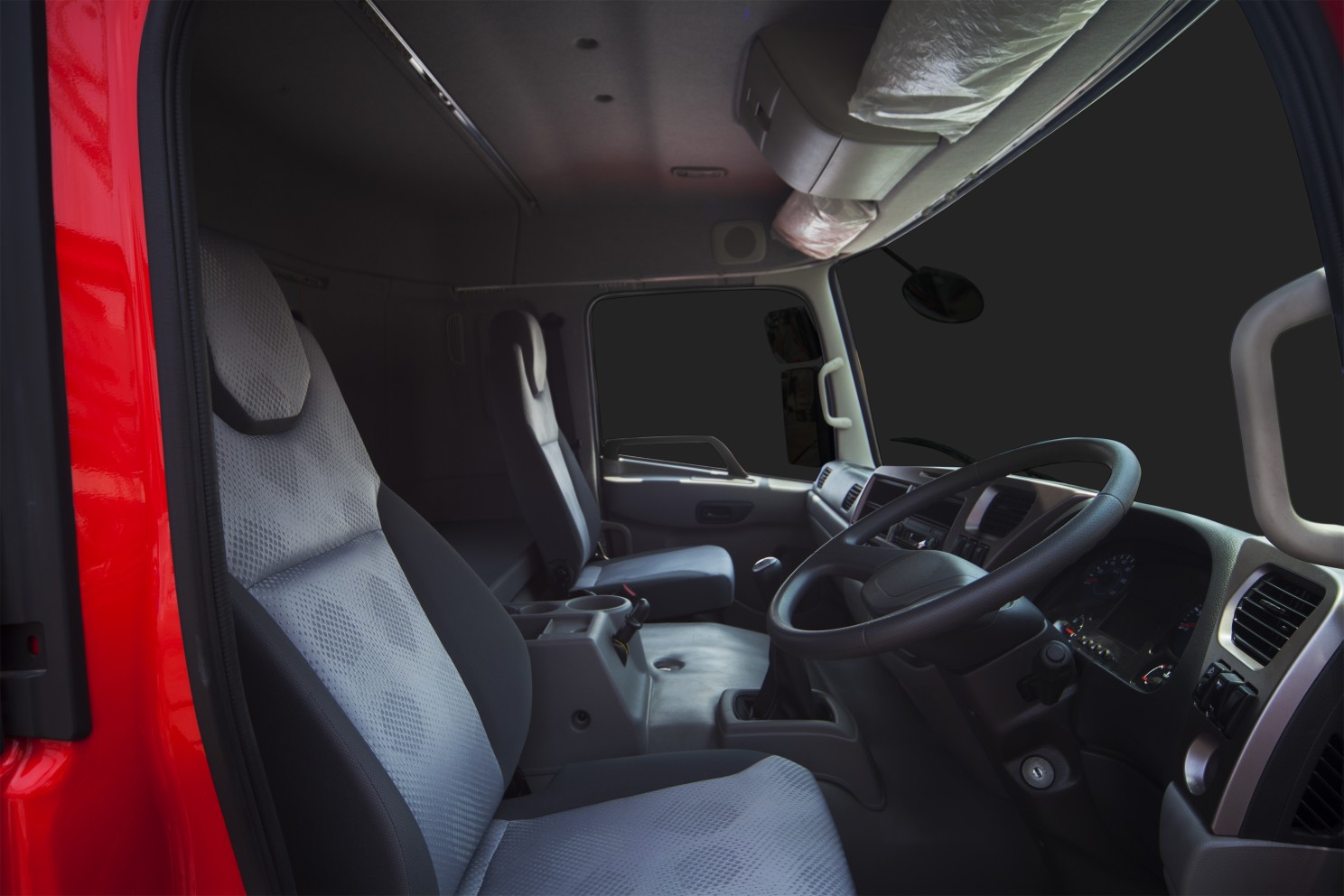
Susie Jones
Pięć najważniejszych wskazówek, dzięki którym kabina ciężarówki stanie się domem
Utworzony: 22.08.2024
•
Aktualizacja: 22.08.2024
Jako kierowca ciężarówki spędzasz długie godziny w trasie, co często może być męczące i monotonne, więc naturalnie chciałbyś, aby twoje otoczenie, miejsce, w którym stacjonujesz najdłużej, było jak drugi dom. Dlatego wielu kierowców ma tendencję do dostosowywania i dekorowania swoich kabin, ale jakie są najlepsze sposoby, aby kabina sypialna była jak dom z dala od domu? Zebraliśmy pięć najważniejszych wskazówek, które pomogą Ci w tym procesie.
Dekoracja
Jednym z najlepszych sposobów na spersonalizowanie kabiny jest dodanie dekoracji, które przypominają o domu. Dekoracje pozwalają również dodać styl i kolor.
Pościel i poduszki - Dodaj osobisty akcent do swojej pościeli i poduszek, wybierając te, które mają kolor lub wzór, który lubisz. Może to sprawić, że kabina będzie bardziej przytulna i mniej stagnacyjna.
Pokrowce na siedzenia - Pokrowce na siedzenia są często dostępne w różnych kolorach, wzorach i materiałach, które ożywią kabinę. Nie tylko sprawią, że kabina będzie bardziej zachęcająca, ale także ochronią wnętrze przed zużyciem, brudem i rozlanymi płynami. Amazon ma zwykle duży wybór dostępnych kolorów.
Dywaniki, zasłony i rolety - Wybór dywaników i zasłon może odmienić wnętrze kabiny. Zasłony nie tylko dodadzą walorów estetycznych, ale także pomogą ci się porządnie wyspać.
Zdjęcia, plakaty i dzieła sztuki - te przedmioty nie zajmują dużo miejsca w kabinie, a mogą sprawić, że od razu poczujesz się jak w domu. Użyj haczyków z poleceniami do instalacji bez uszkodzeń.
Rozrywka: Pod koniec dnia jazdy zrelaksuj się jak w domu, oglądając telewizję, DVD lub streamując coś na laptopie. Przed rozpoczęciem przesyłania strumieniowego będziesz potrzebować WiFi, sprawdź naszą [stronę z mapami] (https://snapacc.com/map/), aby dowiedzieć się, które przystanki oferują tę usługę.
Alternatywnie można utworzyć hotspot na smartfonie, który będzie wykorzystywał dane telefonu do przesyłania strumieniowego. Książki i czasopisma to kolejny świetny sposób na zapewnienie sobie rozrywki po długim dniu jazdy. Czasami prosta rozmowa wideo z przyjaciółmi lub rodziną może cię zrelaksować i sprawić, że poczujesz się jak w domu.

Komfort
Spędzasz dużo czasu w kabinie, więc ważne jest, aby nie rezygnować z komfortu. Dlaczego nie zainwestować w następujące elementy:
Nakładka na materac - Przyzwoity sen ma kluczowe znaczenie dla bezpieczeństwa Twojego i innych osób. Zainwestowanie w dobrą nakładkę na materac zapewni wygodną przestrzeń do spania.
Ergonomiczny fotel kierowcy - Większość czasu spędzisz na fotelu kierowcy, dlatego ważne jest, aby był on jak najbardziej wygodny i wspierający. Zainwestuj w ergonomiczny fotel kierowcy lub poduszkę, która będzie wspierać Twoje plecy podczas tych długich godzin.
Dodatkowe poduszki i koce - Jak wspomniano powyżej, zakup pościeli i poduszek w ulubionym kolorze lub wzorze może sprawić, że kabina poczuje się jak w domu. Rozważ zakup dodatkowych poduszek i koców, aby nadać kabinie jeszcze bardziej osobisty charakter i zapewnić maksymalny komfort.
Część kuchenna/urządzenia
Dodanie mini-lodówki lub kuchenki mikrofalowej do kabiny pozwoli ci przygotowywać jedzenie tak, jak w domu, dzięki czemu nie będziesz musiał polegać na postojach ciężarówek i jedzeniu poza domem. Sugerujemy zastanowienie się, jakie przedmioty będą potrzebne w tym obszarze, na przykład, jeśli pijesz kawę, spróbuj zdobyć mały ekspres do kawy. Korzystanie z kuchni i urządzeń nie tylko powstrzyma cię od wydawania fortuny na jedzenie poza domem, ale także wpłynie na ogólny stan zdrowia.
Dbaj o czystość i porządek
Mieszkanie w małej przestrzeni może bardzo szybko stać się nieuporządkowane. Zainwestowanie czasu i wysiłku w regularne sprzątanie może zdziałać cuda dla zdrowia psychicznego i umożliwić bardziej wydajną i efektywną pracę. Zapewnienie dedykowanych obszarów dla swoich przedmiotów pomoże w tym, a ProDrivers ma kilka doskonałych wskazówek, jak utrzymać wszystko zorganizowane.
Jak kierowcy ciężarówek radzą sobie z nudą?
Nuda nie tylko wpływa na zadowolenie z pracy, ale może również wpływać na jej bezpieczeństwo. Istnieje wiele sposobów na zapewnienie rozrywki kierowcom ciężarówek podczas jazdy.
Muzyka i podcasty: Muzyka to świetny sposób na zapewnienie kierowcom rozrywki podczas długiej jazdy. Stworzenie listy ulubionych utworów do słuchania może natychmiast zmniejszyć nudę. Podcasty to świetny sposób na urozmaicenie jazdy, wiele z nich oferuje porady, pomoc w nauce nowych umiejętności lub po prostu rozrywkę.
Rozciąganie nóg: Zatrzymywanie się i wysiadanie z kabiny w celu rozprostowania nóg może natychmiast wyeliminować nudę. Regularne postoje mogą również zwiększyć energię.
Gdzie śpią kierowcy ciężarówek?
Od 1 listopada kierowcy samochodów ciężarowych w Wielkiej Brytanii, którzy robią regularne cotygodniowe przerwy w kabinie, muszą teraz odpoczywać w odpowiednich miejscach. Ponieważ jest ich niewiele, niektórzy kierowcy odpoczywają na poboczach, które często nie są bezpieczne. Dlatego znalezienie bezpiecznego i cichego miejsca do zaparkowania na nocną drzemkę lub odpoczynek jest niezwykle ważne. Korzystając z naszej aplikacji intruck lub przechodząc na naszą stronę maps page można znaleźć parking dla ciężarówek w pobliżu i sprawdzić, jakie udogodnienia są oferowane.
Jak kierowcy ciężarówek radzą sobie z samotnością?
Choć bycie kierowcą ciężarówki ma wiele zalet, jednym z minusów tej branży może być samotność. Może to być problem dla wielu kierowców, którzy czują się odizolowani ze względu na charakter swojej pracy. Planowanie pozostawania w kontakcie z przyjaciółmi i rodziną może dać kierowcom impuls do działania w trasie. Fora dla kierowców ciężarówek, grupy na Facebooku i czaty są świetne, jeśli chcesz stać się częścią społeczności kierowców ciężarówek. All Trucking zawiera kilka fantastycznych wskazówek, które pomogą ci zwalczyć samotność jako kierowca ciężarówki w trasie.
Sprawienie, by kabina ciężarówki poczuła się jak dom, wymaga nieco wysiłku i kreatywności, ale korzyści z tego płynące znacznie ułatwią długie podróże. Ważne jest, aby pamiętać, że małe akcenty mogą mieć duży wpływ na przestrzeń życiową, a korzystanie z powyższych wskazówek pozwoli ci uczynić ją wygodną i przyjazną. Jak sprawić, by kabina poczuła się jak dom z dala od domu?



